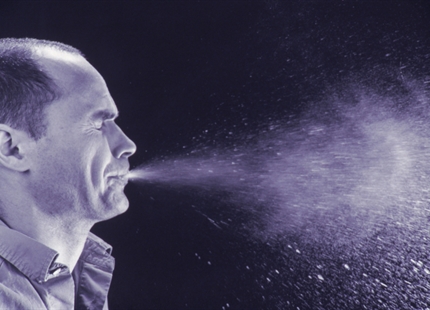05.08.2020
Why Relative Humidity Control Benefits Airborne Infection Control
During these difficult times, it makes sense to be proactive about your indoor airborne infection control strategy. This is especially true for daycares, hospitals, elder care facilities, and other similarly sensitive environments. Maintaining effective indoor relative humidity, between 40-60%RH is the key to limiting the spread of infectious pathogens.
We’ve covered this in detail before, but today, let’s focus on the specifics of airflow and aerosol reach.
Revisiting the Essentials
To recap, viral strains and other bacteria are transported through the air in microscopic droplets of moisture. These are known as aerosols and, when relative humidity is too low, they can float further in the air from the distribution source. Therefore, if someone with flu symptoms coughs, they immediately expel infectious microbes. This is why, during the pandemic, a two-meter distancing requirement is put in place, though circumstances may necessitate further distancing depending on multiple factors; gusts from open windows and fans, slipstreams, and other forms of airflow disturbance that can push aerosols around just as easily. Having a proper humidity control solution in place can help minimize the risk by regulating the indoor relative humidity, keeping it at a level where aerosols will settle more quickly.
Minimizing Spread, Easier Cleaning
With the immediate effects of maintaining indoor humidity between 40-60%RH in mind, we can also spotlight a key benefit: it can be easier to keep indoor environments clean and sterilized. For example, say that an employee comes into the office with a flu; they touch three door handles, open the communal fridge, and then sit at their desk. That’s a lot of touchpoints as it is, so there’s a higher risk of the virus spreading through the office, especially if it has an open-concept layout.
Next, the employee is sent home to recover. If the indoor relative humidity is in that ideal zone of 40-60%RH, only those who came over to interact with them or sat close by are at immediate risk. The same goes for anyone who came into contact with the same touchpoints. This makes it easier to perform a thorough cleaning without disrupting the whole office while also minimizing the risk of spread. If the same environment didn’t have proper humidity control in place, aerosols distributed by the ill individual could easily spread to more employees and visitors.
Quicker, More Effective Action
Stopping the spread of any viral pathogens is critical to keeping operations smooth, at optimal efficiency, and safe for employees. Maintaining indoor relative humidity enables faster risk assessment and more effective isolation procedures as, otherwise, it can be next-to-impossible to stop bacteria from getting into ventilation and spreading from person to person. This is particularly true for extremely infectious viral strains such as COVID-19 and seasonal flus.
In the end, having an effective airborne infection control strategy demands proper humidity control. Regardless of whether you operate in a commercial or industrial application, provide critical local services or otherwise, the team at Condair has an ideal, energy-efficient solution waiting for you. Contact us today to learn about our humidification solutions, available in various load capacities to suit operations of all sizes.
Similar Links:
https://www.condair.com/humidifiernews/blog-overview/legionnaires-disease-and-infection-control




